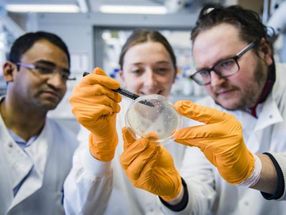Newly improved NIST reference material targets infant formula analysis
Advertisement
Chemists at the National Institute of Standards and Technology (NIST) have issued a new certified reference material for determining the concentrations of vitamins, minerals and other nutrients in infant and adult nutritional formula and similar products. The new Standard Reference Material (SRM 1849) for Infant/Adult Nutritional Formula, represents a significant improvement over the now discontinued SRM 1846, Infant Formula, which had been offered since 1996.
Proper nutrition is essential for proper development in infants; too much or too little of certain nutrients can be harmful or even fatal. According to NIST chemist Katherine Sharpless, infant formula is one of the most regulated food items in the United States. Manufacturers are bound by the Infant Formula Act of 1980 (Public Law 96-359) to test their formula to ensure that the nutrient levels conform to ranges and minimums as specified in the statute.
NIST researchers chose to replace the older SRM for a number of reasons. The process of obtaining NIST-certified values for a candidate reference material can be lengthy and expensive. When NIST first released SRM 1846, there were a number of other available reference materials that had certified values for elements, so NIST researchers did not measure those values in SRM 1846, publishing them only as “reference values” measured by other laboratories. Moreover, in 1996 NIST did not have in-house methods to certify values for fatty acids, vitamins D and K, and many water-soluble vitamins, so those, too, relied on the work of collaborating laboratories. As a result, NIST released SRM 1846 with only five certified values, 38 reference values and nine information values.
Foremost among the reasons that led to the decision to replace SRM 1846 was the fact that the material no longer presented the same analytical challenge as commercially available formulas. SRMs should ideally be no more and no less difficult to analyze than the material they are intended to simulate.






















































